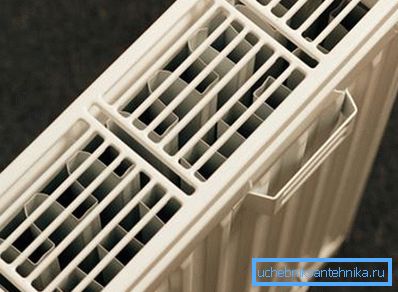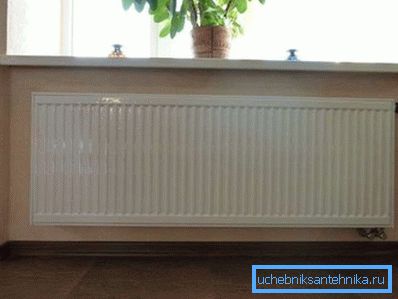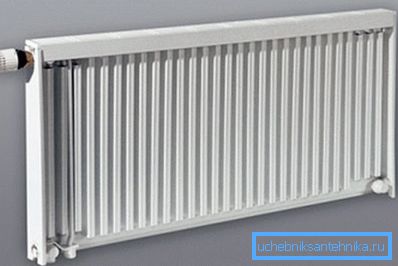Steel radiators prado heating and their features
Despite the fact that in the domestic market there is a huge range of heating devices, Prado steel radiators are very popular among consumers. These heaters are made of high quality steel and have many other advantages.
In this article we will try to understand in detail what makes these radiators attractive.

About company
The company engaged in the manufacture of these radiators, has a rather rich history, since it was founded in the city of Izhevsk as early as 1959. NITI "Progress" at that time was one of the leaders of engineering and technical thought of the USSR. After the collapse of the Soviet Union, the company underwent a reorganization and conversion.
It should be noted that the manufacture of steel heating radiators at the production facilities of NITI Progress was mastered relatively recently - in 2005. At the same time, the Prado brand appeared. At the same time, a trading house opened in Izhevsk, the main task of which was to promote the Prado radiators in the domestic market.
Today, radiators manufactured under this brand have gained popularity not only in Russia, but also in other CIS countries. Moreover, the products of the Prado trading house were repeatedly awarded cups of industry exhibitions and were awarded with diplomas.

Prado Battery Features
Production
To get an idea of the products in question, first of all, you should familiarize yourself with the features of production, which are listed below:
- As mentioned above, Prado batteries are manufactured in factory conditions at Progress capacities.. The main raw material for heating devices is high carbon steel at least 1.2 - 1.4 mm thick. Production of radiators begins with cutting steel sheets according to the sizes of future radiators.
- Then the blanks are subjected to pressure treatment in a stamping machine, as a result of which they acquire the necessary profile.
- Two stamped blanks are welded using modern technology, resulting in a panel. Depending on the model, Prado heating radiators can contain one, two or even three such panels, between which fins of thinner steel are welded, which increases the heat transfer of the device.
Note! Welding and stamping blanks carried out automatically. This allows not only to significantly improve the quality of products, but also to reduce its price.
Finished products are first painted using the electro submersible method, after which a stable powder paint is applied to them. Due to this, the products not only look attractive, but also reliably protected from corrosion.

Merits
The popularity of the Prado radiators is associated with the following advantages:
- The low weight of the structure, making it easy to do it yourself. Moreover, the mounting brackets are very convenient, the only thing before you install the battery, you should be familiar with the mounting scheme.
- Efficient heat dissipation and high heating rate.
- Panel batteries look attractive, and thanks to the use of high-quality paint, they retain a white color for a long time.
- Models with multiple panels provide air convection, which increases the heating efficiency.
- The price is quite affordable.
- Durability in compliance with the rules of operation.

disadvantages
The disadvantages of the Prado radiators are related to the design features, so they are characteristic of all panel radiators.
In particular, the following points can be highlighted:
- The devices are not designed for use in centralized heating systems, as they do not withstand high pressure and water hammer, moreover, they need a clean coolant.
- Coolant temperature should not exceed 120 degrees Celsius.
- Instructions for use of devices does not recommend draining water from the system, as this may cause corrosion inside the panels.
- The impossibility of precise adjustment of the heating temperature even in models equipped with a thermostat.
- On some models, problems with varnish were noted.
Note! The maximum pressure for which these heating devices are designed is 0.9 MPa. The destruction occurs at a pressure of 2.25 MPa.
Of course, many models of modern radiators are devoid of the above disadvantages, however, if you compare the price / quality ratio, the Prado radiators clearly win. The only thing before buying is to make sure that the characteristics of the heating system coincide with the characteristics of radiators.

The lineup
Currently, the Prado model range includes six types of radiators:
| Type of | Design features |
| ten | This model is a single-panel radiator without welded fins. Since the product is the simplest, it has the lowest cost. |
| eleven | The single-panel radiator, in contrast to the first, is equipped with a number of fins and end walls. At the top and bottom of the structure there are gratings for air convection. |
| 20 | The product consists of two panels, between which pass the channels for air flow. |
| 21 and 22 | They are two-pane radiators, which are equipped with one or two rows of fins. |
| 33 | This model includes three panels and three rows of edges. Thus, it is the most powerful. |

In addition, all models of radiators differ in the type of connection:
- Prado Classic - contain branch pipes for side liner.
- Prado Universal - designed for bottom liner. This modification is equipped with a built-in thermostatic valve and is intended for use in two-pipe systems.
Tip! The scheme for the installation of heating radiators is available on the manufacturer's website.

Here, in fact, all the features of the Prado radiators.
Conclusion
Prado panel steel radiators are an excellent choice for autonomous heating systems, the pressure of which does not exceed 0.9 MPa. At low cost, they attract with their quality as well as their pretty appearance.
In addition, the extensive model range of this product allows you to choose the optimal power devices in each case separately. From the video in this article, you can learn more information on this topic.